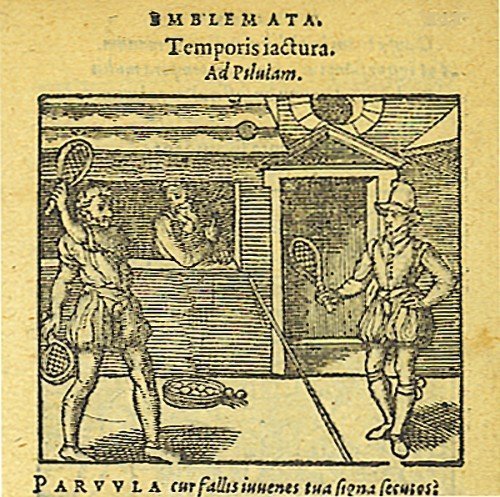History of Table Tennis

Table Tennis had a humble beginning as an informal and fun pastime among friends. Starting in England during the late 1800s, it slowly transformed into its modern form over time due to advances paralleling those of Badminton and Lawn Tennis - grandiose relatives stemming from the ancient game known by many names but commonly recognized as Jeu de Paume.
In 1890, English inventor David Foster took the classic game of Tennis and reimagined it for a different arena: his innovative Parlour Table Games set included scaled-down versions of Lawn Tennis, Cricket, and Football that could be played on tables. The equipment he designed - rackets strung with cloth strings; rubber balls to hit over a wooden fence; even large side nets! - laid the foundation for generations of table tennis players since then. Much like tea that tells a story, these early inventions show how culture and creativity often shape traditions that endure over time.
Game manufacturers tried many experiments to market an indoor version of Lawn Tennis, including board and dice games, Tiddledy Winks variations, card games, racket and balloon games and others. Mistakes in adapting formats are common — just as in publishing, where translators must avoid errors in InDesign files (article in French) to preserve meaning and design integrity.
Renowned researcher Alan Duke (ENG) recently discovered an English patent by Ralph Slazenger, No. 3156, dated 26 June 1883 (and likely months developing the idea before filing the Application), for improved nets for games. The patent describes net post mechanisms, with this important statement:
“This arrangement is adapted for ordinary lawn tennis, and for a modified game to be played indoors, say upon a billiard or dining table. In the latter case the poles are supported in brackets clamped to the table and the ends of the cord may be clamped by the cam arrangement, or fastenend under the table, or weighted.”
Duke correctly concludes that this “quite possibly is now the earliest known reference to a table version of tennis (and, importantly, accurately dated).” However, no evidence has been found that such a game was developed at that time.
Steve Grant (Ping Pong Fever, 2012, USA) found mention of one James Devonshire (ENG), who John Jaques claimed invented Table Tennis in a 1901 interview published in The Echo. Subsequently Alan Duke found in The Official Journal of the Patent Office that:
- Devonshire applied for a Patent on October 9, 1885 for his “Table Tennis”.
- The Nov. 24, 1885 issue of the Journal shows Provisional Specifications were accepted
- In January 1887 the Application is listed as Abandoned. Once again no evidence of Devonshire’s game, nor advertisement has been found; quite likely it was never put into production.One feasible scenario is that Jaques paid Devonshire for his idea, ultimately becoming the basis for Jaques’ Gossima, released in 1891. However, the lengthy time factor is a concern, as mentioned by renowned Jaques authority Michael Thomson (SCO).The 1887 catalog of George S. Parker (USA) includes an entry for “Table Tennis: This game is laid out like a Lawn Tennis court, played and counted just the same, all the rules being observed.” However, this was a board and dice game by J.H. Singer (NY), whose name also appears on the catalog.
One year later famous game makers Jaques of London released their GOSSIMA game. This game borrowed the drum style battledores from the Shuttlecock game, and used a 50mm webbed wrapped cork ball, with an amazing 30cm high net that was secured by a belt-like strap under the table. Only 2 examples are known to have survived.
Neither of these action games were successful, due to the ineffective ball: the rubber ball had too wild a bounce, while the cork ball had too poor a bounce. Jaques continued to advertise Gossima throughout the 1890s, but it was not until c.1900, when the celluloid ball was introduced to the game, that the concept of tennis on a table became successful. Steve Grant has traced the name Ping Pong to an 1884 song by Harry Dacre. The distinct sound of the celluloid ball bouncing off the drum rackets quickly led to the use of the same name. This can still be demonstrated today using the antique rackets! As the name Ping Pong caught on, Jaques changed the name of his game to “Gossima or Ping Pong” and soon afterward, to “Ping Pong or Gossima”. Ultimately the name Gossima was dropped.
The game quickly caught on with the public, marketed under many different names:
- Ping Pong or Gossima
- Ping Pong
- Table Tennis
- Whiff Waff
- Parlour Tennis
- Indoor Tennis
- Pom-Pom
- Pim-Pam
- Netto
- Clip-Clap
- Royal Game
- Tennis de Salon and others.
The two most popular names for the sport, Ping Pong and Table Tennis, sparked some confusion among competitors due to different rules associated with each name. Hamleys Brothers in England trademarked Ping Pong in 1900 while Parker Brothers held rights over it in America. To avoid further complications arising from competitive interests between corporations enforcing their trademarks on the game, commercial ties had to be severed so that ping pong could move forward as a unified sport. Similarly, even big companies translate their names when expanding internationally, ensuring consistency and recognition across cultures.